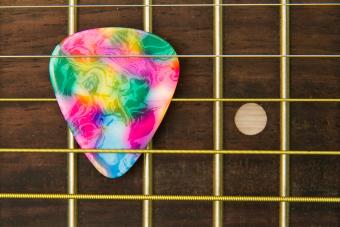Learn a Common Jazz Chord Progression

If you're learning to play jazz guitar and want to know some cool jazz chords, one of the best ways to familiarize yourself with them is through chord progressions.
Chord progressions are a series of chords played in a particular order that comprise the structure of a song. The following slideshow will show you a common progression: Imaj7, I7, IVmaj7, IV7, IIIm7, VI7, IIm7, V7 and Imaj7. Many jazz standards like All of Me and There Will Never Be Another You use this progression.
C Major 7

The following example progression is in the key of C. Of course, you could transpose these chords to any other key as long as you use the same intervals between the chords. The first chord shown is C Major 7. You play this chord for one measure, or four counts.
C 7

The next chord is very similar to the first insofar as how it is fingered. You only need to lift your middle finger to make a C7 chord out of a C Major 7 chord. You play this chord for one measure as well.
F Major 7

The next chord is an F Major 7. It is the same exact shape as the C Major 7 chord you just learned, except that instead of being played at the 3rd fret, you play this chord up at the 8th fret. This chord is also played for one full measure, or four counts.
F 7

Just like the change from C Major 7 to C7, the transition from F Major 7 to F7 simply involves lifting your middle finger. You play the F7 chord for one measure.
E minor 7

The next chord played in this progression is E minor 7. This chord is played at the seventh fret. Unlike the other chords so far in this progression, this chord is only played for two beats.
A 7

Following E minor 7, the next chord played is A7. This chord is played at the fifth fret and, like the E minor 7, is only played for two beats, or half a measure.
D minor 7

The next chord is D minor 7. This chord is fingered exactly like E minor 7 except it is played two frets down at the 5th fret rather than at the 7th fret. This chord is also played for two counts.
Sign up for our newsletter featuring all the latest stories and products we love.
G 7

The next chord, G7, is fingered exactly like A7 except that it is played at the 3rd fret instead of the 5th fret. At this point, the progression is over except for the fact that it needs to resolve back to the first chord.
C Major 7

Now you have arrived back where you started at C Major 7. This simple progression is a great way to jam with friends. You can just loop the progress over and over and take turns soloing over it. Putting a common yet cool jazz chord progression to use is one of the best ways to improve your guitar playing and have some fun while you're at it.







